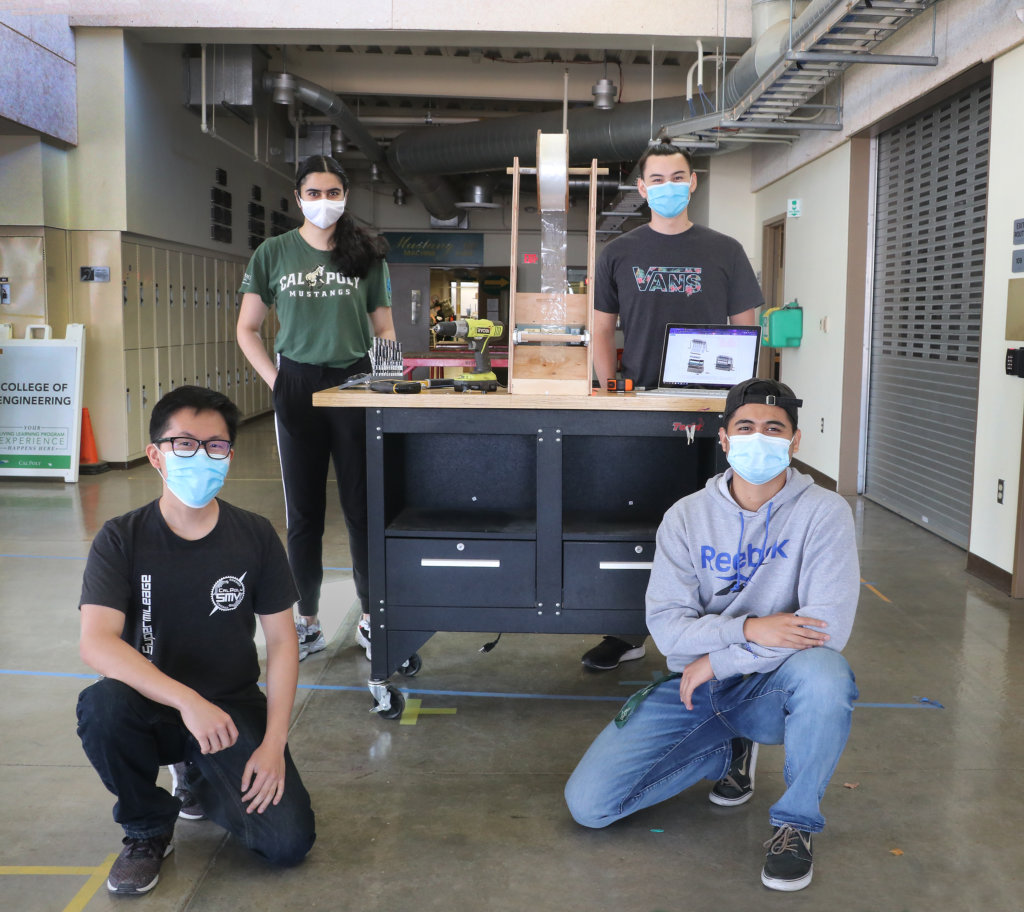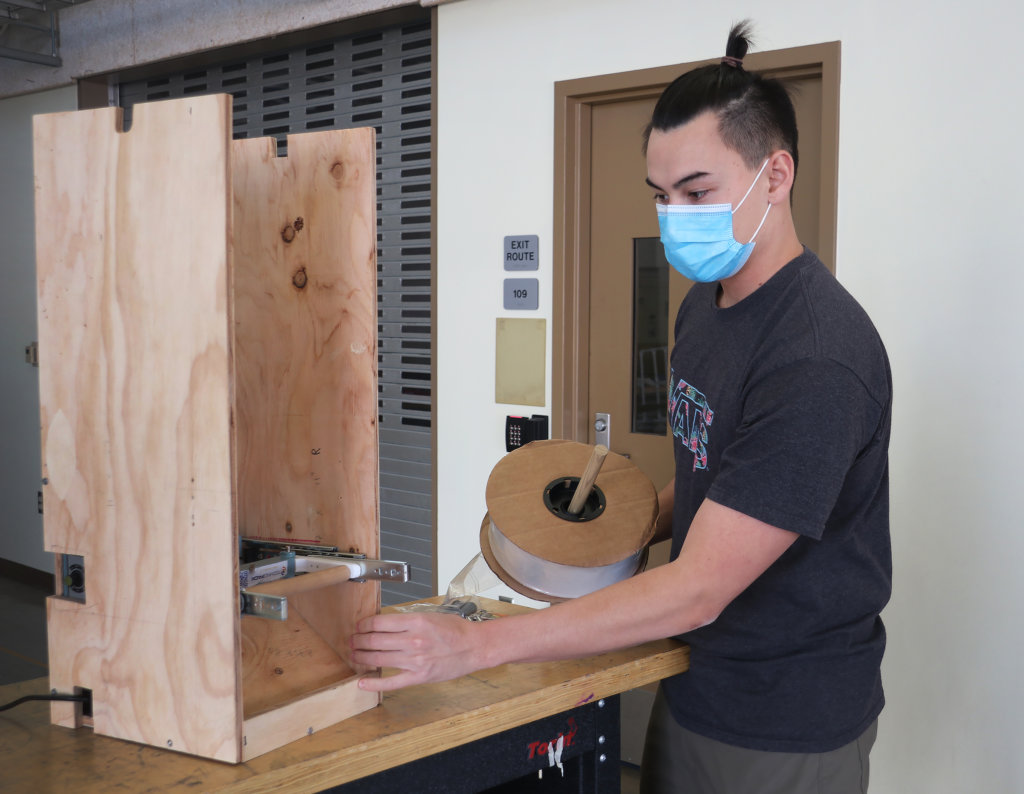For some people with disabilities, jobs that entail packaging and kit assembly provide an opportunity to make money and gain an important sense of independence. But, as a team of mechanical engineering students found, dexterity issues sometimes present obstacles for the disabled community to keep such jobs.

“We learned that many companies can’t afford to keep some disabled workers on staff because their productivity levels don’t match that of their coworkers, and because of this the job retention rate is much lower for them,” said Ashley Humpal, a senior.
A device Humpal’s team designed to offset some of those dexterity challenges finished third in the SourceAmerica 2021 Design Challenge, finishing behind two teams from Cal State Los Angeles.
SourceAmerica, a nonprofit which seeks to empower individuals with disabilities through work opportunities, holds the engineering competition annually to create prototype assistive technologies that could support people with disabilities in their workplaces.
Entering a contest is a somewhat unusual experience for a senior project team, said faculty advisor Peter Schuster.
“The team was mainly motivated by the idea of providing a tool that would help people with physical disabilities find meaningful employment,” he said. “Due to COVID, they weren’t able to work with specific local agencies, and this competition gave them the information and guidance they needed to develop a design despite not being able to work directly with end users.”
In the kitting and consumer packaging industry, companies need small, medium and large items packaged together. But kitting requires several manual operations, including grabbing small parts, counting and opening bags, which is challenging for some workers with disabilities.
“The dexterity issues make it harder for users to coordinate their hands and grasp items,” Humpal said.
As the team learned during their research, which included communicating with representatives from the kitting industries, errors can lead to a decrease in quality assurance and poor efficiency in the kitting process.
The original device they designed – which they named the Just Kitting Workstation — incorporates foot pedals and funnels and requires only simple push-pull motions to reduce the dexterity required to create a kit, easing the process for those with impaired motor functionality in the most ergonomic way.
“Their design is compact, fully integrated and low cost,” Schuster said.
The senior design project program, Schuster said, is structured so all seniors design devices to meet set goals within constraints, whether they be user/sponsor needs or rules for competition. While many of the devices students develop are tailored to one person with physical challenges, this one is designed for a wide audience.

“SourceAmerica left the design criteria very broad, which made trying to develop a product much more difficult,” said Just Kitting team member Kyle Chuang. “It is much easier to cater a design around a specific person than it is to make a design suitable for everyone, especially when there is so much variance in the type and severity of disabilities.”
The process, though, has been rewarding.
“I personally became an engineer because I wanted to be able to be creative and methodical and invent devices that would better people’s lives, and this project combines all those things,” Humpal said.
While the design is compete, the team is now working on a prototype, which will be displayed at the Virtual Senior Project Expo on June 4.
The contest has made the students view their work differently, Chuang said.
“This project has opened my eyes to see just how privileged I am that I can physically access and use most products and devices without additional assistance, but for many people with disabilities, this is rarely the case,” he said. “Their usage of a product is almost strictly dependent on whether the designer included people with disabilities in their design and considered accessibility. Going forward, I plan to look at all future design work through this modified lens in hopes no one is left out.”


